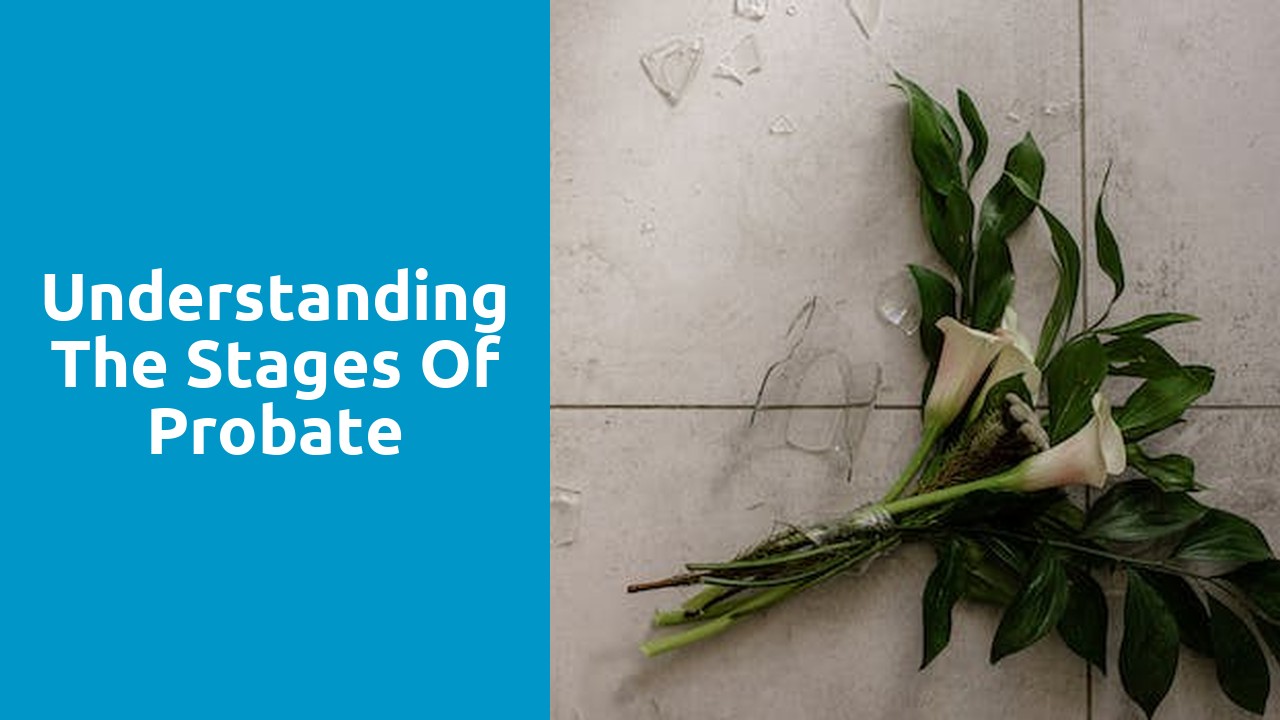Understanding the Stages of Probate

Navigating the Path of Probate: A StepbyStep Guide
In order to successfully navigate the path of probate, it is important to have a clear understanding of the steps involved. Probate is the legal process of administering a deceased person's estate, ensuring that their debts are paid and their assets are distributed according to their wishes. This can be a complex and time-consuming process, but with the right knowledge and guidance, it can be manageable.
The first step in the probate process is to file a petition with the court. This petition will request that a personal representative be appointed to handle the administration of the estate. Once the court approves the petition and appoints a personal representative, they will be responsible for gathering the deceased person's assets, paying any outstanding debts or taxes, and distributing the remaining assets to the beneficiaries. It is important for the personal representative to keep detailed records of their actions and decisions, as they may be required to provide an accounting of the estate to the court.
Unraveling the Legal Process After a Loved One's Passing
When a loved one passes away, navigating the legal process can seem overwhelming. It is a time filled with grief and emotional strain, and the added burden of unraveling the legalities can add to the stress. However, understanding the steps involved in this process can help ease the journey and bring some clarity during this difficult time.
The first step in unraveling the legal process after a loved one's passing is to obtain the death certificate. This document is crucial as it provides the legal proof of death and is required for various purposes, such as notifying financial institutions, insurance companies, and government agencies. Once the death certificate is obtained, it is necessary to gather and preserve any relevant documents, including the will, trust, and any funeral-related paperwork. These documents will serve as the foundation for further steps in the legal process and should be kept in a safe and accessible place.
The Roadmap to Settling an Estate: Insights into Probate
Probate is a legal process that often looms over individuals after the passing of a loved one. It involves the settling and distribution of the deceased person's assets, which can be a complex and challenging endeavor. Understanding the roadmap to settling an estate through probate is crucial for anyone navigating this journey.
The first step in the probate process is to file a petition with the court. This initiates the proceedings and officially acknowledges the death of the individual. The court will then appoint an executor or personal representative who will be responsible for managing the estate. Next, it is important to gather all the necessary information about the assets and debts of the deceased. This includes identifying and valuing their property, as well as locating any outstanding debts or liabilities. This comprehensive inventory will lay the foundation for a smooth probate process. Stay tuned for the following steps in this insightful guide to probate.
Clearing the Fog: Shedding Light on Probate's Steps
Probate can often feel like a complex and confusing process, leaving many individuals unsure of how to navigate its potential pitfalls. However, by shedding light on the steps involved, it is possible to clear the fog and gain a deeper understanding of what to expect.
The first step in the probate process is to gather all necessary documents and information. This includes the deceased's will, financial records, and any other relevant paperwork. Once these documents are assembled, it is crucial to notify the appropriate parties, such as creditors and beneficiaries, of the individual's passing. This initial step sets the foundation for the remainder of the probate journey, ensuring that all parties involved are aware of the situation and ready to proceed with the necessary next steps.
Demystifying the Probate Journey: What You Need to Know
Probate can often be an intimidating and confusing process for individuals who have recently lost a loved one. However, understanding the basics can help ease the stress and provide a sense of direction during this challenging time. The probate journey involves several important steps that need to be navigated carefully to ensure the smooth resolution of a deceased person's estate. From filing the necessary paperwork to distributing assets, each stage requires attention to detail and adherence to legal requirements.
One of the first steps in the probate process is petitioning the court to open an estate. This involves submitting the required documents, such as the original will, death certificate, and any other relevant paperwork, to the appropriate court. Once the estate is officially opened, the court will appoint a personal representative to oversee the administration of the estate. This representative is responsible for managing the assets, paying debts and taxes, and ultimately distributing the remaining property to the beneficiaries. Understanding these initial steps can provide individuals with a foundation of knowledge as they embark on the probate journey.
Unlocking the Secrets of Probate: A Comprehensive Breakdown
Probate is a legal process that can often seem complicated and overwhelming. It is a court-supervised procedure that validates a deceased person's will and ensures the proper distribution of their assets. Understanding the secrets of probate can help demystify this complex journey and provide clarity for those involved.
The first step in unlocking the secrets of probate is to become familiar with the overall process. It typically begins with the filing of a petition with the probate court, which triggers the initiation of probate proceedings. Once the court validates the will, an executor or personal representative is appointed to handle the administration of the estate. This individual is responsible for gathering and inventorying the assets, paying off any debts or taxes, and distributing the remaining property to the beneficiaries according to the terms of the will.
Related Links
What is Probate and How Does it Work?Key Steps in the Probate Process Explained
Navigating Probate: A Comprehensive Guide
Frequently Asked Questions About Probate